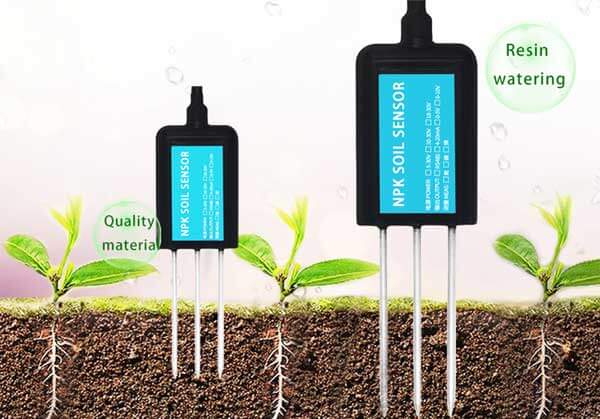Agriculture has always been a vital industry, providing food and resources for the growing population. However, traditional farming practices often face challenges such as unpredictable weather patterns, soil degradation, and inefficient resource utilization. In recent years, the advent of soil sensors has brought about a new era of precision farming, empowering farmers with real-time data and insights to optimize crop production, conserve resources, and improve sustainability. This article explores the revolutionary impact of soil sensors on agriculture and the benefits they bring to modern farming practices.

Understanding Soil Sensors:
Soil sensors are devices that measure various parameters of the soil, including moisture levels, temperature, nutrient content, pH levels, and salinity. These sensors are typically placed in the ground at different depths to collect accurate and continuous data. The information gathered by these sensors provides valuable insights into the soil conditions, allowing farmers to make informed decisions regarding irrigation, fertilization, and crop management.
Optimized Irrigation Management:
Water is a precious resource, and efficient irrigation is crucial for sustainable agriculture. Soil sensors enable precise monitoring of soil moisture levels, allowing farmers to determine the optimal time and amount of water required by the crops. By avoiding over-irrigation or under-irrigation, farmers can minimize water wastage, reduce energy consumption, and prevent waterlogging or drought stress in plants. This targeted irrigation management leads to improved crop yields, water conservation, and cost savings for farmers.
Enhanced Nutrient Management:
Proper nutrient management is essential for healthy plant growth and high-quality yields. Soil sensors provide real-time data on nutrient levels in the soil, enabling farmers to adjust fertilizer applications accordingly. By precisely measuring the nutrient content, farmers can avoid excessive or insufficient fertilization, which can result in nutrient runoff, soil pollution, and reduced crop productivity. With soil sensors, farmers can implement site-specific nutrient management strategies, optimizing resource utilization and minimizing environmental impact.
Site-Specific Crop Management:
Different areas within a field may have varying soil conditions, requiring tailored crop management approaches. Soil sensors enable farmers to create detailed soil maps, highlighting variations in moisture, nutrients, and other important parameters across the field. This information allows farmers to implement site-specific crop management practices, such as variable rate seeding, fertilization, and pest control. By treating each area of the field according to its specific needs, farmers can maximize crop productivity while minimizing input costs and environmental impact.
Early Detection of Plant Stress:
Early detection of plant stress is crucial for preventing yield losses and ensuring timely intervention. Soil sensors provide continuous monitoring of soil moisture and temperature, which are key indicators of plant health. By detecting changes in these parameters, farmers can identify signs of water stress, nutrient deficiencies, or disease development at an early stage. With this information, farmers can take proactive measures to address the issues promptly, potentially saving crops and improving overall productivity.
Data-Driven Decision Making:
Soil sensors generate vast amounts of data that can be analyzed to gain valuable insights into soil health, crop growth patterns, and environmental conditions. Advanced data analytics and machine learning techniques can process this data, providing farmers with actionable recommendations and predictive models. By harnessing the power of data-driven decision making, farmers can optimize their farming practices, reduce risks, and increase profitability. Additionally, aggregated data from multiple farms can contribute to broader research efforts, enabling scientists and policymakers to make evidence-based decisions for the agricultural sector.

Challenges and Future Directions:
While soil sensors offer immense potential, there are challenges to overcome for widespread adoption. Cost, sensor accuracy, data management, and farmer education are some of the hurdles that need to be addressed. Continued research and development efforts are required to improve sensor technology, enhance data analysis capabilities, and make soil sensors more affordable and user-friendly. Additionally, promoting awareness and providing training to farmers on the benefits and usage of soil sensors will be crucial for their successful integration into farming practices.
Conclusion:
Soil sensors have revolutionized agriculture by enabling precision farming practices. With real-time data on soil moisture, nutrients, temperature, and other parameters, farmers can optimize irrigation, nutrient management, and crop practices. This leads to improved resource utilization, increased crop yields, reduced environmental impact, and enhanced sustainability. As technology continues to advance, soil sensors will play a vital role in shaping the future of agriculture, empowering farmers to make informed decisions and ensuring food security for a growing global population.
